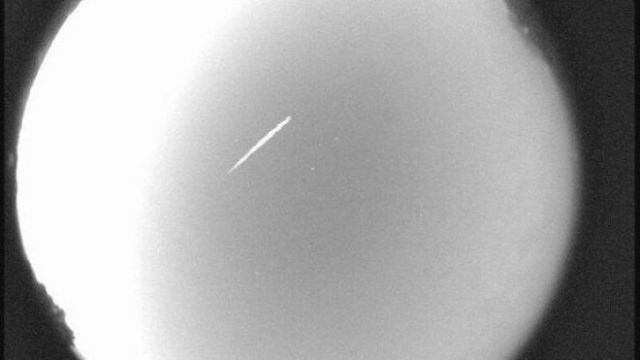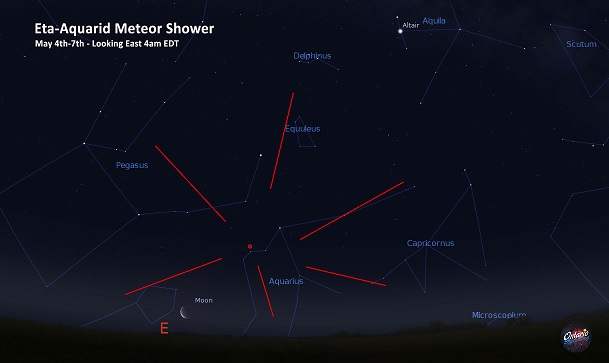

| Visitors Now: | |
| Total Visits: | |
| Total Stories: |

| Story Views | |
| Now: | |
| Last Hour: | |
| Last 24 Hours: | |
| Total: | |
Meteor shower from Halley’s Comet Peaks this Weekend
Saturday, May 4, 2013 16:33
% of readers think this story is Fact. Add your two cents.
space.com May 4,2013
Meteor shower from Halley’s Comet peaks this weekend
Early Sunday, just before dawn, we’ll have an opportunity to see some of the remnants of the most famous of comets briefly light up the early morning sky.
The famed Halley’s Comet made its last pass through the inner solar system in 1986 and is not due back until the summer of 2061.
But each time Halley sweeps around the sun, it leaves behind a dusty trail — call it “cosmic litter” — that is responsible for two meteor showers on Earth each year.

An image of Halley’s Comet taken in 1986. (NASA)
The first of those “shooting stars” displays, the >Eta Aquarid meteor shower, will peak on Sunday.
The Eta Aquarid meteor shower occurs each year in early May because the orbit of Halley’s Comet closely approaches the orbit of Earth in two places.
The first is the May timeframe, which leads to the Eta Aquarids. The other point occurs in mid-October, producing the Orionid meteor shower.

An Eta Aquarid meteor streaks over northern Georgia on April 29, 2012. (NASA/MSFC/B. Cooke)
When and where to watch
The Eta Aquarid meteor shower is predicted to peak early on Sunday morning, but dark skies and clear weather are vital to observe them. Under ideal conditions (a dark, moonless sky) about 55 to 60 of these very swift meteors might be seen per hour.
The meteor shower appears at about one-quarter of its peak strength for several days before and after May 5.
This is a very good year to look out for the Eta Aquarid meteors from Halley’s Comet because the moon will be at a thin, waning crescent phase, and just 20-percent illuminated and providing little interference for viewing these swift streaks of light.

Image:ontariostargazing.ca
From places south of the equator, the Eta Aquarids typically put on very good show. Australian stargazers consider them to be the best meteor display of the year.
But for those watching from north of the equator, it’s a much different story.
Where to look
The apparent origin point of a meteor shower in the night sky is known as its radiant. For the Eta Aquarids, the radiant is found within the “Water Jar” of the constellation Aquarius, which begins to rise above the eastern horizon around 3 a.m. your local time.
Unfortunately, this constellation never really gets very high as seen from north temperate latitudes.
And soon after 4 a.m. local time, the morning twilight will begin to brighten the sky.
So if you are hoping to see up to 60 meteors per hour, forget it. With the radiant so low above the horizon, the majority of those meteors will be streaking below the horizon and out of sight.
In fact, from North America, typical Aquarid rates are only 10 meteors per hour at 26 degrees north latitude (Miami, Fla., or Brownsville, Texas), 5 per hour at around 35 degrees latitude (Los Angeles, Calif., or Cape Hatteras, N.C.) and practically zero to the north of 40 degrees (New York, Chicago, and Philadelphia).
Read more:


